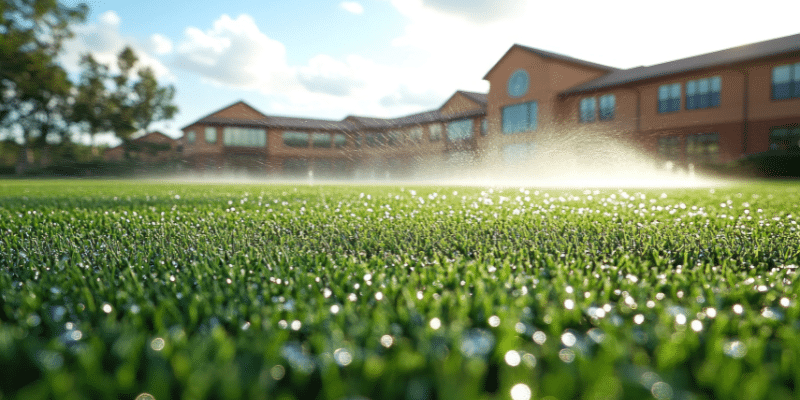hello world!

Maintaining a lush, green lawn has long been a symbol of pride for homeowners. However, traditional grass lawns demand extensive watering, regular mowing, and chemical treatments, all of which have significant environmental and financial costs. As water conservation becomes increasingly critical, many are seeking sustainable alternatives that offer aesthetic appeal without the hefty resource expenditure.
Enter artificial turf. It needs zero water, requires minimal upkeep and looks pristine year-round. Is it too good to be true? Below, we weigh the benefits and drawbacks to keep homeowners informed.
Traditional lawns are notorious for their high water consumption needs. In fact, landscape irrigation accounts for nearly one-third of all residential water use in the US, totalling about 9 billion gallons daily. In Canada, the average daily residential water use was 223 litres per person in 2021. A significant portion of this water is dedicated to lawn maintenance.
By transitioning to artificial turf, homeowners can drastically reduce their water usage, conserving thousands of gallons annually. This leads to substantial savings on water bills and contributes positively to the environment. A win-win, so far.
Beyond water savings, artificial turf eliminates the need for fertilizers, herbicides, and pesticides—many of which contain harmful chemicals that can leach into groundwater or disrupt local ecosystems. With synthetic grass, there’s no risk of over-fertilization, weed invasions, or pest outbreaks, making it a safer, more environmentally responsible option for families, pets, and the planet.
A common apprehension regarding artificial turf is its potential to melt in hot weather. While it’s true that synthetic materials can become warmer than natural grass under direct sunlight, advancements in turf technology have introduced solutions to mitigate this issue:
These features allow homeowners to enjoy visually appealing landscaping even during Ontario’s peak summer months. You get what you pay for—cheap solutions won’t hold up and may cause more harm to the environment in the long term.
Environmental concerns about microplastics are valid, especially because they are already so pervasive. However, reputable artificial turf manufacturers have made significant strides in producing eco-friendly options that don’t “shed” or break down like cheap plastic.
Choose specialized, environmentally conscious artificial turf to mitigate concerns related to microplastics. If you’re unsure of where to start, chat with a professional to assess your options.
Switching to artificial turf presents a viable solution for homeowners hoping to reduce their environmental impact. Overall, the impact on water conservation alone makes synthetic grass a standout option. You can address concerns about high temperatures and microplastics by selecting high-quality, specialized products that are designed to last. Luckily, it’s possible to enjoy a beautiful, low-maintenance lawn that aligns with sustainability goals.
For those ready to make the transition, Hamilton Builders’ Supply offers a range of premium artificial turf options. With a commitment to quality and environmental responsibility, we provide solutions that ensure your lawn looks immaculate all season long.
Contact us today to learn more about our product selection.